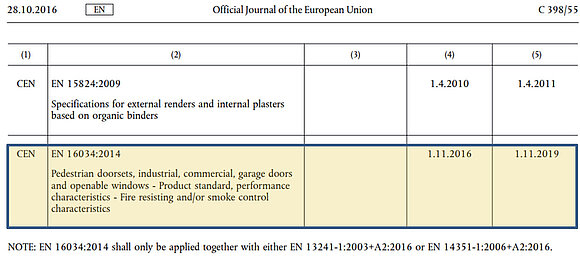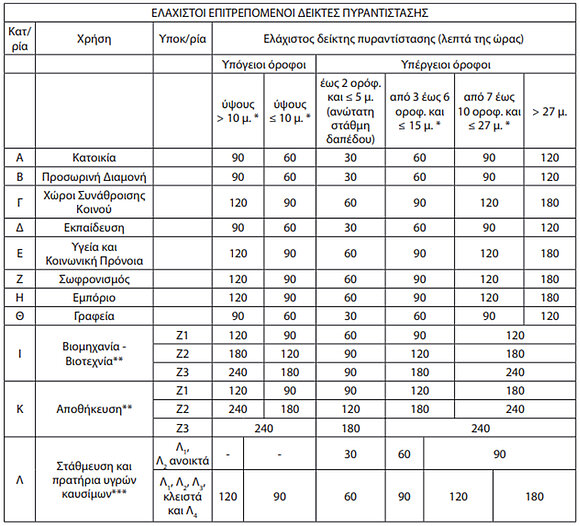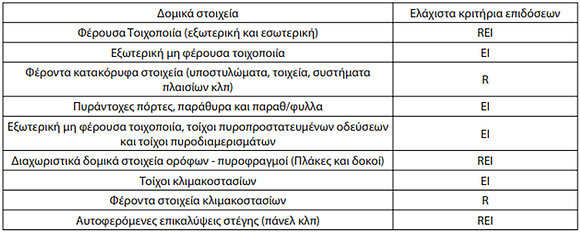Lesezeit: 6 Minuten
The present-day situation of Greek construction product guidelines, building codes and technical requirements for the products – fire closures will be reviewed. Moreover, updates from the manufacturers of fire protection products in the Greek market will be given. Further, every source that can offer details on the Greek building regulations will be included in the review.
Dieser Beitrag ist nur in englischer Sprache verfügbar
A brief overview of the situation in the field of fire protection closures from 2016 until now
The “transition period” that began on 28th October 2016 came to an end on 1st November 2019. Compliance is now compulsory when it comes to harmonised standard EN 16034:2014: Pedestrian doorsets, industrial, commercial, garage doors and openable windows – Product standard, performance characteristics. Fire resisting and/or smoke control characteristics. The EN 16034:2014 standard relates to fire-resisting and smoke-control properties and must be implemented in conjunction with the relevant product standard for the purposes of CE marking.

(source: Official Journal of the European Union)
As of 2019, standard EN 16034:2014 applies to those products included in the scope of European product standards:
- EN 14351-1:2006+A2:2106 Windows and doors. Product standard, performance characteristics. Part 1: Windows and external pedestrian doorsets
- EN 13241:2004+A2:2016 Industrial, commercial, garage doors and gates. Product standard, performance characteristics
The system in operation for assessing and verifying the constancy of performance for CE marking, as established by this standard with a view to meeting the requirements of the Construction Products Regulation (Regulation No. 305/2011), is system AVCP 1. This involves a Notified Body issuing a Certificate of Constancy of Performance following type testing (including samples) and a Factory Production Control.
The products not covered by EN 16034 are:
- The fixed side lights or toplights of an element (pedestrian doorsets, French doors or windows) which are not an integral part of the frame.
- Composite elements made from components of different origins and for which no single identified manufacturer or legal entity assumes responsibility.
- Elements fitted with radio-controlled locks. Where such components are fitted, the relevant standards should be applied in parallel.
- Products excluded from EN 14351-1
For interior doors where there is not yet a harmonised standard, the testing, classification and marking requirements of each individual country apply on the basis of national legislation.

Unfortunately, it is a fact that the regulation is not observed by manufacturers in Greece. There are no procedures and approval requirements for interior doors and other products that are not covered by 16034. Nowadays, about 400 fire-resistant window and door manufacturers in Greece sell their products in the Greek market without adhering to the law's requirement to surveillance the factory production. However, about 10 manufacturers have already completed the surveillance procedures for certification by a Notified Product Certification Body according to the harmonised standard 16034:2014, and of these only 2-3 have been actually inspected, while the rest have carried out a "hoax" audit without the physical presence of the auditor from an accredited body. All of these manufacturers still use the same certificates they had previously issued until today, even two years after BREXIT. Unfortunately, these products are traded internally and sold within the Greek market.

Requirements and regulations
For thirty years, Greece relied on the Presidential Decree (P.D.) 71/1988 for the safety of citizens in cases of fire on buildings, as well as on a series of Fire Regulations that supplemented the legislation, which had begun to show its inability to keep up with modern developments.
The previous regulation, apart from being old, was characterised by complexity and placed the burden on the Fire Service. With Presidential Decree 41 published in Official Government Gazette 80/A/7-5-2018, Greece adopted the new Fire Protection of Buildings Regulation, which replaced the 71/1988. The new Regulation was the result of four years of fermentation and is an attempt to adopt modern standards of active and passive fire protection, based on European standards, as well as an attempt to create a unified framework. However, when we discuss fire safety in buildings, we cannot but focus on the building elements themselves and the materials that make them up.
Specifically on the issue of structural fire protection, Article 6 of the Regulation describes the prerequisites for limiting both the risks of partial or total collapse of the building due to fire, as well as the spread of fire within the building and its transmission to neighbouring buildings or other structures, by explicitly defining fire safety requirements for the structural elements. For this purpose the Presidential Decree 41 uses fire protection specifications, in compliance with the European Standards for:
- Construction products (according to EN 13501-1 on reaction to fire behaviour).
- Structural elements, load-bearing and non load-bearing (according to EN 13501-2 on 'reaction to fire resistance').
Specifically, for the structural elements of the building envelope, Table 7 indicates the minimum fire resistance index for each building use and in relation to its height and Table 8 specifies the required fire resistance performance criteria to be met by the structural elements in each case.
Very briefly, for fire-resistant doors and windows, the minimum performance criteria are defined as integrity E and resistance to heat transmission I, while the fire resistance indices range from a minimum of 30 minutes to 240 minutes. Although the Presidential Decree mentions the categories, most manufactures are not aware of the obligations and requirements associated with a respective categorisation (for certification, surveillance, accreditation).

Surveillance Bodies
In Greece, the responsible authorities are the Hellenic Fire Service, the Ministries of Interior, Economy, and Development, the Ministry of Environment and Energy and the Market Surveillance.
Unfortunately, the above authorities know the content of the regulation but do not know the content of the harmonised European Standards, therefore they do not know how exactly the procedures for CE marking and surveillance are. This is because there are insufficient human resources in the departments as well as a lack of qualified people.
Conclusion
The situation in Greece is rather blur but it seems to be clearing up. Up to now, every manufacturer has done what they wanted to do, attaching CE marking in whatever way they saw fit. However, market surveillance has started to react and so has the Market and it seems that a movement towards compliance with the regulations has started to appear.
Literature
[1] Greek Official Government Gazette 80/A/7-5-2018, Presidential Decree 41
[2] Official Journal of the European Union
[3] Hellenic Fire Service
[4] EN 16034:2014
Pedestrian doorsets, industrial, commercial, garage doors and openable windows – Product standard, performance characteristics – Fire resisting and/or smoke control characteristics
[5] EN 14351-2:2018
Windows and doors – Product standard, performance characteristics – Part 2: Internal pedestrian doorsets
[6] EN 13501-2:2016
Fire classification of construction products and building elements – Part 2: Classification using data from fire resistance tests, excluding ventilation services


